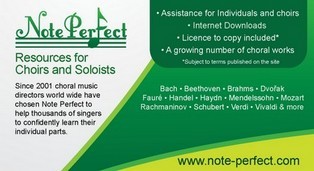Prelude and Fugue in D Major BWV 532 (Bach)
Organ
Johann Sebastian Bach
View or download the score
Monica Czausz, Christ the King Lutheran Church, Houston, Texas
Guy Whatley, Camelback Bible Church, Paradise Valley, Arizona
Virgil Fox
Johann Sebastian Bach’s Prelude and Fugue in D major (BWV 532) is a prelude and fugue written for the organ c. 1710, and has an approximate duration of 11 1⁄2 minutes.
Like most of Bach’s organ compositions, this piece was written during his tenure in Weimar between 1709 and 1717. Many of his greatest and most well known organ works were written during this period, including, for example, the Prelude and Fugue in E major, BWV 566. The composer was residing in Weimar after being hired by the ruling duke of Weimar, Wilhelm Ernst, in 1709 as an organist and member of the court orchestra; he was particularly encouraged to make use of his unique talents with the organ by the duke. Indeed, his fame on the instrument grew and he was visited by many students of the organ to hear him play and to try to learn from his technique. The Prelude and Fugue in D major was probably composed in 1710, although this is not certain. However, it was definitely written before Bach codified the clear two-section prelude and fugue in the form of what is used in The Well-Tempered Clavier, which was composed in 1722. This is because BWV 532 features a lengthy, complex, self-contained fugue preceded by a multisectional prelude.
The piece is in two sections: a prelude and a fugue. Both the sections are in D major but, to begin with, there is no tempo marking given on either section. Both pieces are in 4/4.
The prelude commences with a semi-quaver scale from the pedals, and then the manuals begin with an intricate quaver pattern between the hands. Another run from the pedals is then followed by a continuation of the quaver pattern from the right-hand. The quaver pattern then repeats one octave lower. The pedals then play arpeggiated patterns which begin a repeated theme and slow down throughout. This lasts for four bars. A sustained pedal then accompanies the manuals, which have a dotted quaver, semi-quaver rhythm. This then turns into a repeated G♯, B demi-semi-quaver rhythm. This then slows to a series of repeated cadences.
A new phrase then begins with an ascending scale in the manuals leading up to a large D major chord. A new tempo is then introduced: Alla breve, and then a large phrase is introduced with a very polyphonic texture and a prominent tune. A section then starts with chords played in the manuals and the quavers played in the pedals. This continues for another long period of time until the left hand takes the tune and the right hand plays the quavers.
When this section finishes, a new tempo of Adagio begins. A new theme then arrives with slow quavers on the lower manual and pedal and ascending scales in the upper manual. The prelude then concludes with a slow theme, on broken arpeggios and some slow, elongated final chords.
Fugue
The subject of this fugue is eight measures long and consist of tight figurations encompassing an entire octave. Bach takes this subject firstly through the relative minor and then the mediant minor, and then to the minor harmony of the leading tone and the major harmony on the supertonic. After this progression we enter an episode with a flurry of figures on the dominant and then a full entry of the subject on the tonic that works to resolve the preceding tension so well that the eventual coda almost has the nature of an afterthought.
This article is licensed under the GNU Free Documentation License. It uses material from the Wikipedia article "Metasyntactic variable."
Comments
Please make comment on the score and music here.
- Keep to the topic of the music on this page. Be polite, comments are moderated
- Tell us where you have used this music and if your performance is published on the internet, please put a link to it in the website field
- Give performance advice/suggestions
- Ask others questions about performance techniques
- Please do not make requests for music on this page
- Your email address is not published
0
reviews
Our sponsors
Other Organ Music
